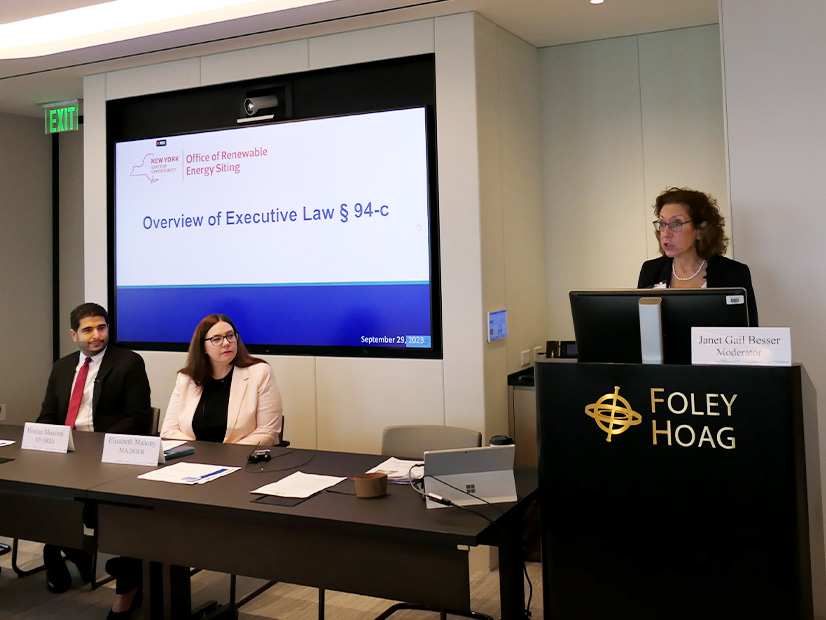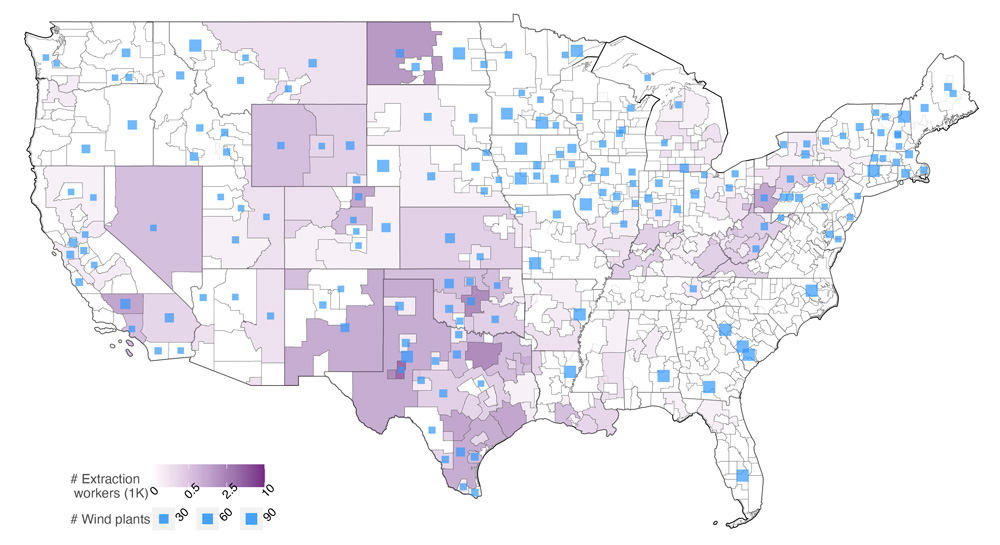BOSTON — The clean energy transition will require an all-out push on transmission planning and siting reform, government officials and energy experts told stakeholders on Friday, outlining some of the major challenges and opportunities of the region’s energy transition.
Several speakers at Raab Associates’ New England Electricity Restructuring Roundtable emphasized the importance of interregional and intraregional transmission planning to ensure the grid can handle increased amounts of variable clean energy and higher demand from electrification.
“Transmission planning is vital if we are going to deliver the clean energy transition,” said Mike Calviou, senior vice president for National Grid.
Calviou spoke about his experience working for National Grid in the United Kingdom, which has successfully deployed nearly 14 GW of offshore wind operational capacity, compared to just 48 MW in the U.S. He said the U.K. now is facing congestion issues on the transmission system, hurting both rates and the further deployment of clean energy.
To avoid escalating congestion costs in New England as offshore wind capacity increases, Calviou said the region should focus on anticipatory investment and coordinated planning, instead of the current just-in-time approach.
Maria Robinson, director of the U.S. Department of Energy Grid Deployment Office, outlined some of the federal funding opportunities available for transmissions projects, including the $10.5 billion Grid Resilience and Innovation Partnerships Program and the $2.5 billion Transmission Facilitation Program.
Robinson noted, however, that “throwing money at the problem is not necessarily the way to solve these issues around particular backlogs on the transmission system,” and called for a targeted approach rather than blunt force.
She highlighted the office’s work on National Interest Electric Transmission Corridors, which can increase funding opportunities and streamline the permitting process within designated corridors.
“When it comes to corridors, we’re taking a very different approach than the Obama administration,” Robinson said, noting that the approach of the Obama administration focused on designating “large swaths of land” as corridors. She said the current approach is more targeted, relying on developers and utilities to indicate exactly where corridors would be helpful.
“I think it will be both more legally defensible as well as useful to actually get some of these designated,” Robinson said.
Clarke Bruno, CEO of the transmission developer Anbaric, touted the potential benefits of an offshore grid to minimize the onshore impacts of deploying offshore wind at scale. (See Brattle Study Highlights Benefits of Offshore Grid.)
An ocean grid would be “costly, but less costly than the alternatives,” Bruno said.
Permitting and Siting Reform
Government officials from New York and Massachusetts also discussed permitting and siting reform, a topic which has been gaining steam in the commonwealth.
Earlier in the week prior to the conference, Gov. Maura Healey (D) signed an executive order creating a state Commission on Clean Energy Infrastructure Siting and Permitting to make recommendations on permitting and siting reform (See Massachusetts Announces Permitting And Siting Reform Commission.), while top legislators have indicated the topic is a key priority in the current legislative session. (See Checking in on Clean Energy at the Mass. Legislature.)
Houtan Moaveni, executive director of the New York Office of Renewable Energy Siting (ORES), spoke about some of New York’s recent successes in expediting the development of clean energy. The ORES was created by the legislature in 2020, consolidating the state’s siting and environmental review processes for large clean energy infrastructure.
Moaveni said the office has helped usher in the “most rapid pace of renewable energy project approvals in the state’s history.” He emphasized the importance of the preapplication process, creating clear guidelines for project developers and engaging with impacted communities early in the process.
“Building local support for these projects is just as important as getting regulatory approvals,” Moaveni said, adding that he has spent much of his time traveling to meet with communities to understand their needs and ensure local benefits — including discounted electric rates.
“It is possible to streamline and expedite the permitting process for generating facilities without undermining communities and environmental protections,” Moaveni said.
Elizabeth Mahony, commissioner at the Massachusetts Department of Energy Resources, said the newly created permitting and siting commission has “a lot of work to do.”
“Maybe we can take a couple of pages from New York’s playbook — if it’s a good idea, we’ll steal it,” Mahony said in response to Moaveni’s presentation.
Mahony doubled down on the state’s commitment to renewable energy development, singling out solar and offshore wind as key areas of growth. She highlighted a DOER report released in July on the potential for solar development that mapped solar potential across the entire state. The analysis found the state has the potential for about 50 GW of highly rated solar capacity.
“We can be strategic about where we deploy solar and how we deploy it,” Mahony said. “We think that this information… is really a tool that we can use, that municipalities that are facing a lot of permitting issues can use, and certainly that our utilities should be using as they are planning their grid upgrades.”

